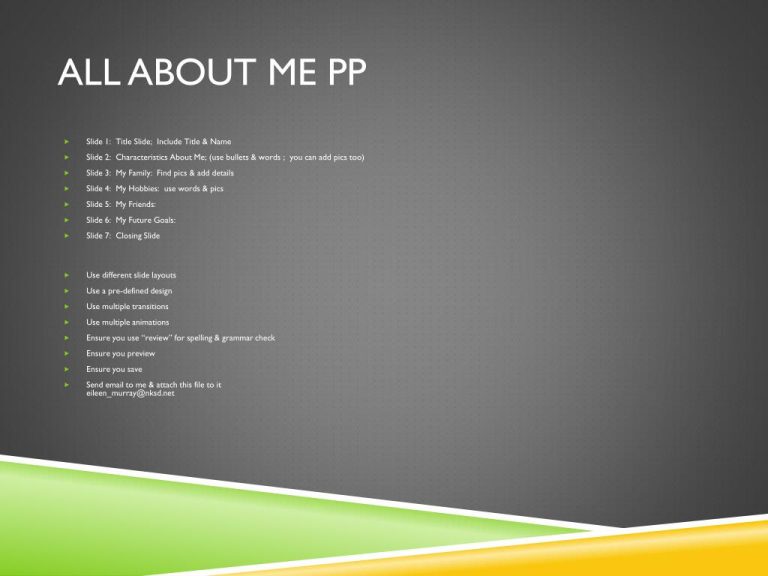Presentation Contingency Plans: Ensuring Flawless Delivery
Presentation Contingency Plans prepare for unexpected issues during presentations. They ensure smooth delivery despite technical or logistical problems.
Every presenter faces potential hiccups. Equipment may fail, audience needs might change, or unforeseen disruptions can occur. Having a solid contingency plan helps manage these challenges effectively. Start by identifying potential issues and developing backup strategies. Use multiple copies of your presentation stored in different locations.
Test all equipment beforehand and have spare batteries and cables. Practice your speech to handle any situation confidently. Familiarize yourself with the venue’s resources and staff. Always stay calm and adaptable. Proper preparation ensures a seamless presentation experience, enhancing audience engagement and leaving a lasting impression.
Importance Of Contingency Plans
Creating a presentation often involves many moving parts. Despite our best efforts, things can go wrong. This is why having a contingency plan is vital. It prepares you for unexpected issues, ensuring your presentation can still succeed.
Mitigating Risks
Contingency plans help in mitigating risks during presentations. These plans address possible failures and provide backup solutions. For example, if the projector fails, having printed handouts can save the day. Backup plans make sure technology issues don’t ruin your presentation.
Consider these common risks and their contingency solutions:
- Technical failures: Have a backup laptop or USB drive.
- Power outages: Print essential slides and handouts.
- Internet issues: Download online resources in advance.
Ensuring Confidence
Having a contingency plan boosts your confidence. Knowing you have a backup reduces stress. This helps you stay calm and focused.
Here are some ways contingency plans ensure confidence:
| Scenario | Contingency Plan |
|---|---|
| Presenter falls ill | Have a co-presenter ready |
| Software crashes | Use printed slides |
| Unexpected questions | Prepare extra notes |
These steps ensure your presentation runs smoothly. It also shows your audience you are well-prepared.
Common Presentation Challenges
Presentations can be stressful. Many things can go wrong. Knowing these challenges helps in preparing better. Here, we discuss some common issues.
Technical Issues
Technical issues are very common in presentations. They can disrupt the flow. Here are some common technical problems:
- Projector Failures: The projector may not work.
- Software Problems: The presentation software might crash.
- Connectivity Issues: Internet may stop working.
- Microphone Malfunctions: The microphone might not function.
It’s crucial to have a backup plan. Consider these tips:
- Test all equipment beforehand.
- Have a backup device ready.
- Save your presentation on a USB drive.
- Print important slides as hard copies.
Audience Engagement
Keeping the audience engaged is essential. A bored audience won’t retain information. Here are some methods to keep them interested:
| Method | Description |
|---|---|
| Ask Questions: | Engage the audience with questions. Make them think. |
| Use Visual Aids: | Incorporate images and videos. They can make points clearer. |
| Interactive Elements: | Use polls or quizzes. They make presentations fun. |
| Storytelling: | Share stories. Stories are memorable and engaging. |
Plan these methods ahead. Know your audience. Adapt your strategies to their interests.
Preparing Backup Materials
Staying calm under pressure is crucial for successful presentations. Anxiety can disrupt your flow and message. Here are strategies to help you maintain composure during your presentation.
Mindfulness Techniques
Mindfulness techniques can help you stay calm. Practice deep breathing exercises before your presentation. This helps to relax your body and mind. Count to four as you breathe in, hold for four, then exhale for four.
Visualization is another powerful tool. Picture yourself delivering your presentation confidently. Imagine the audience responding positively. This mental rehearsal can boost your confidence.
Grounding techniques can keep you present. Focus on your five senses. Notice the feeling of the floor under your feet. Listen to the sounds around you. This can help reduce anxiety.
Emergency Protocols
Having emergency protocols can save your presentation. Be prepared for technical issues. Always have a backup of your slides on a USB drive. Print out your slides or notes in case of a projector failure.
Know your key points well. This allows you to continue even without visual aids. Familiarize yourself with the presentation room. Check the equipment beforehand. This can prevent last-minute surprises.
Have a plan for unexpected questions. It’s okay to say you don’t know. Offer to find out the answer after the presentation. This shows honesty and professionalism.
Practice your presentation multiple times. This builds muscle memory. It helps you stay on track even when nervous. Record yourself to identify areas for improvement.
| Mindfulness Techniques | Emergency Protocols |
|---|---|
| Deep breathing exercises | Backup your slides |
| Visualization | Print out slides or notes |
| Grounding techniques | Know your key points |
| Practice and record | Familiarize with the room |
Staying composed under pressure is a skill you can develop. With the right techniques, you can deliver a confident and engaging presentation.
Frequently Asked Questions
What Are Some Examples Of Contingency Plans?
Examples of contingency plans include disaster recovery plans, data backup strategies, emergency response plans, and business continuity plans. These plans help organizations quickly adapt to unexpected events and minimize disruptions. They ensure critical operations continue during crises.
What Are The 5 Steps Of Contingency Planning?
The 5 steps of contingency planning are: 1. Identify potential risks. 2. Prioritize these risks. 3. Develop response strategies. 4. Create a contingency plan. 5. Test and update the plan regularly.
What Should I Write For A Contingency Plan?
Write key risks, response strategies, roles, communication plans, and resources needed. Ensure it’s clear, concise, and actionable.
Conclusion
Creating effective presentation contingency plans is essential. These plans ensure seamless delivery despite unexpected challenges. Be prepared, stay flexible, and maintain confidence. With a robust backup strategy, you can handle any disruptions smoothly. Remember, preparation is key to successful presentations.
Always anticipate potential issues and have solutions ready.





